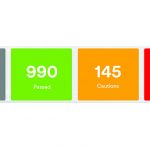As temperatures plummet throughout the United States, rodents become more active in seeking out a warm shelter for the winter. Unfortunately, food processing facilities are perfect for rodents because they have everything that rodents need to survive.
Rodents are scavengers, and as a result they like to have all of their survival needs in close proximity at all times. Once they enter your facility, their three main needs are food, water and shelter, so it’s easy to see why food processing facilities are an appealing target.
Before anything else, you’ll want to work with your pest management professional to make sure that your facility has an Integrated Pest Management (IPM) program to help keep pests out. An IPM program is tailor-made for each facility and focuses on environmentally friendly prevention and exclusion tactics to protect your facility, using chemicals only as a last resort. A strong program can help prevent a number of different pests from getting into your facility, even rodents. This preventive approach also compliments the HARPC under FSMA.
Adaptable and clever, rodents can be a pain if they are able to get inside. Rats can fit through a hole the size of a quarter, while mice can fit through a hole the size of a dime. Rodents are also known to chew on openings around a facility in order to make them large enough to squeeze through. Even the smallest of cracks and gaps can become a pathway inside to a wandering rodent.
There are significant health and safety risks associated with rodents that should make you carefully consider your current pest management program and its tactics for keeping them out. Rodents are known carriers of more than 35 different diseases including Hantavirus, salmonellosis, jaundice and plague. All of these are incredibly dangerous to have anywhere near your product, so the best solution is to prevent rodents from getting inside in the first place.
Also, rodents have tiny bladders and frequent bowel movements, so they leave behind a trail of urination and defecation everywhere they go. They’ll expend their waste, which naturally contains pathogens that spread disease, dozens of times a day.
Because of their roaming nature and constant waste expulsion, there are some telltale signs of rodents that can help you detect them before it becomes a major issue. It’s important that you educate your staff about these signs and contact your pest management professional to resolve the problem as quickly as possible.
Signs of Rodent Activity
- Urine marks and droppings. These can be found nearly anywhere that a rodent has been. Look for little brown pellets and yellowish discoloring, which will show best under UV light. A black light inspection can help determine if there is an infestation.
- Noises in the walls, basement or ceiling. Gnawing, clawing and scratching noises can be a sign that a rodent might be running around, especially if heard at night. Rodents prefer to stay out of sight when hunting for food, so you won’t often notice them during times of high activity around a facility.
- Rub marks around corners and baseboards. As they look for food and try to remain unseen, rodents will most often stick close to walls and corners. When they do skitter around, they’ll leave behind brownish marks that can be seen if closely inspected.
- Musky odors. When rodents congregate in a certain area, their nesting sites will begin to give off a detectable odor especially if the rodents are reproducing.
Issues with rodents can get out of hand quickly as rodents reproduce rapidly. As soon as a rodent feels safe and has warmth and shelter, it will start the reproduction process. Mice produce about eight litters every year with between four and seven pups in a litter, while rats produce about six litters every year with between eight and twelve pups in a litter. Some rodents can then reach sexual maturity in as little as 35 days after birth, which shows how quickly rodents can multiply within a facility.
Make sure to educate staff on your IPM program, and be sure to establish the proper protocol in the case of a pest sighting. It’s important to note when, where and how many pests were spotted, as this information is valuable when working to resolve a problem.
The key is to stop rodents before a problem becomes an infestation, but trying to catch and remove rodents yourself can make them wise to trapping and baiting techniques. Remember that rodents are quite clever and learn from past experiences. To avoid making things worse in the long run, contact a pest management professional if you think that you have a rodent problem, especially if it might be an infestation.
If you are looking for some ways to make a difference on your own, there are certainly some things that you can do. Treat your facility like a fortress, and every good fortress needs to be as impenetrable as possible. Below are some exclusion and prevention tactics that you can start doing immediately to make your facility as strong as possible.
Rodent Prevention Tips
- Seal the exterior. Walk around the exterior of your facility and check for any holes or cracks the size of a dime or larger. Pay especially close attention to pipes and other penetrations that may have open spaces around where they enter the building.
- Remove clutter. Rodents use a variety of materials to build their nests, so areas fraught with clutter will look appealing to them, especially if it’s materials like cardboard boxes and paper.
- Store food effectively. Keep all food products tightly sealed and off of the floor, as rodents have an easier time detecting and getting into food if it isn’t elevated. Also, containers made of plastic or metal are preferable so that they won’t get chewed through.
- Clean up. Food and drink particles from spills or waste bins will attract rodents, so clean up and take out the trash regularly. Regular sweeping and mopping is an absolute must, especially around trash receptacles.
- Trim vegetation. Plants need to be cut back at least two feet from the outside of your building and grass needs to be kept short. Vegetation gives rodents a place to hide, so if not trimmed back it can serve as a “jumping off” point to help rodents get indoors.
It’s also important to consider the environment surrounding your facility, as this can be a major factor in the amount of pest pressure that you experience. For rodents, cities are often hot spots, as other factors like construction and greater waste output from a higher concentration of people can increase pest pressure on a facility.
If you’re worried that your facility might be at risk of a rodent infestation, contact your pest management provider and get an assessment. It’s always better to be prepared with an IPM program ahead of time, as these critters aren’t going to be easy to remove from your facility once they’ve settled inside.





